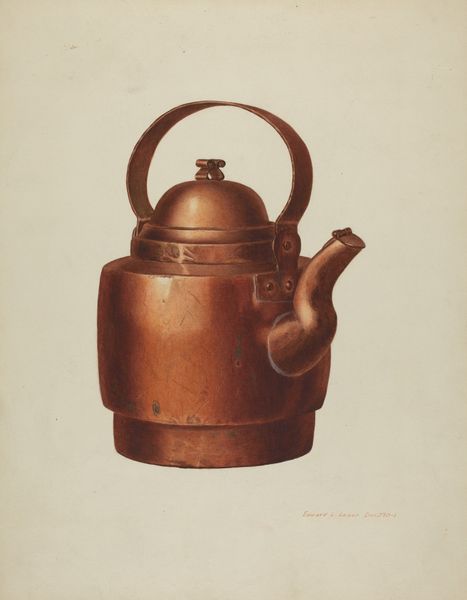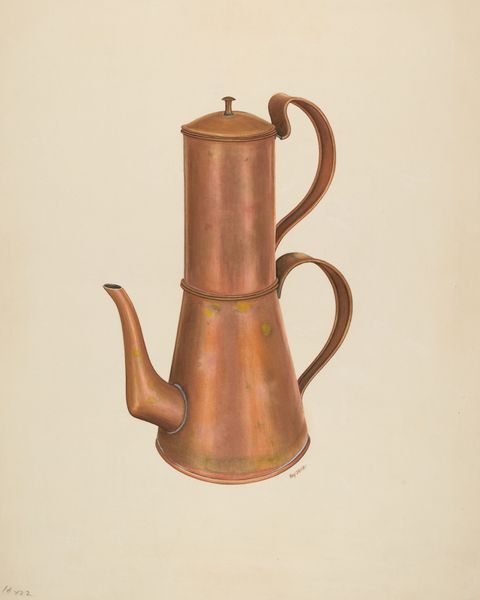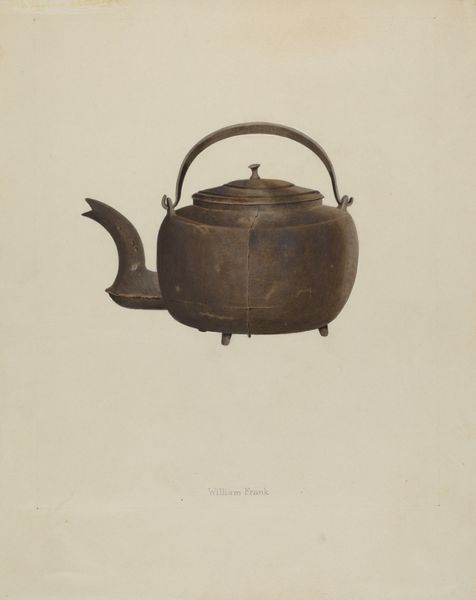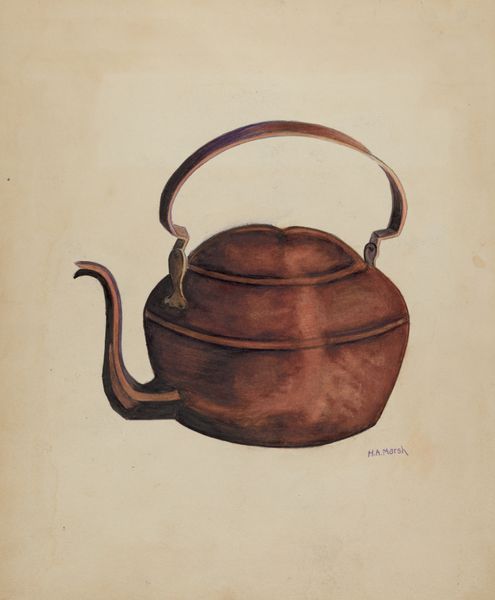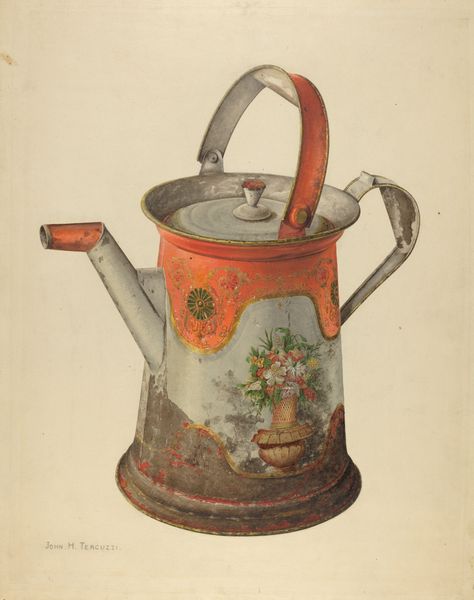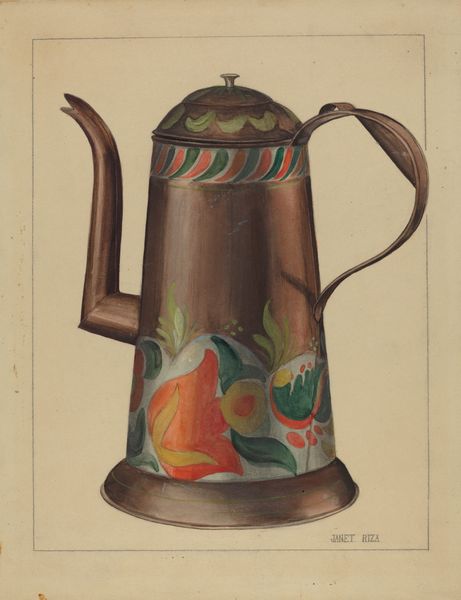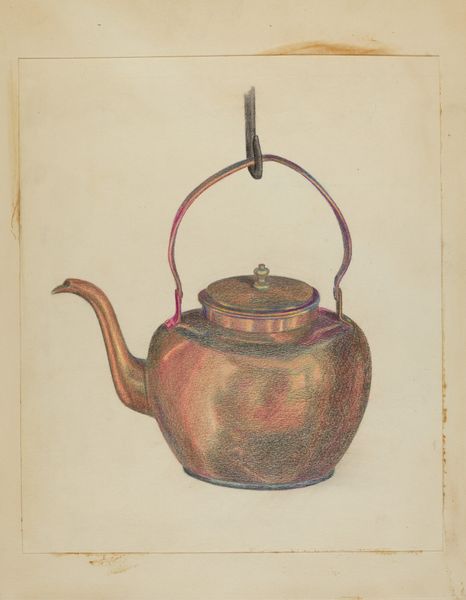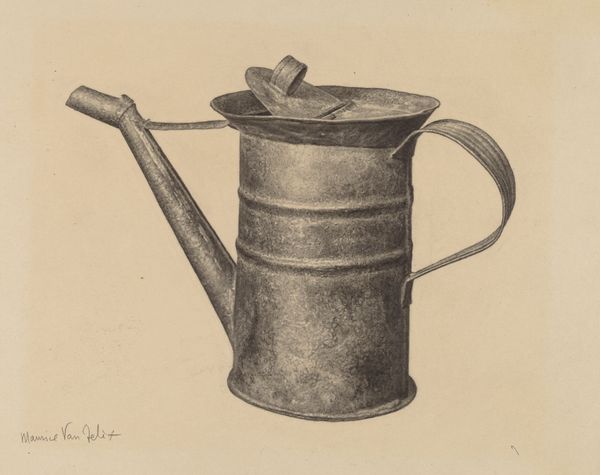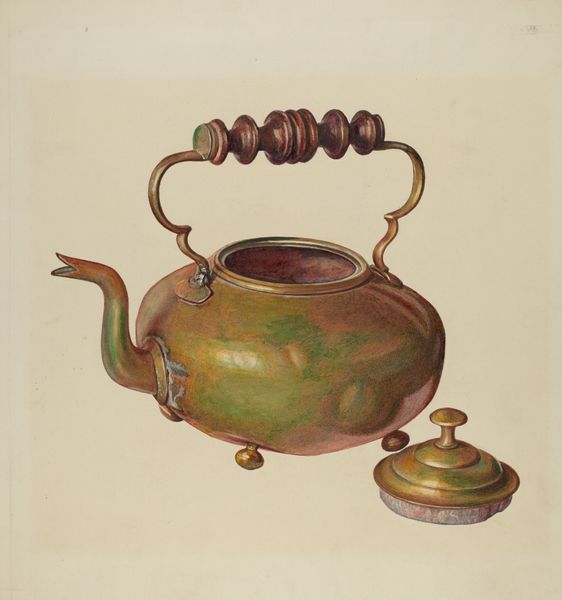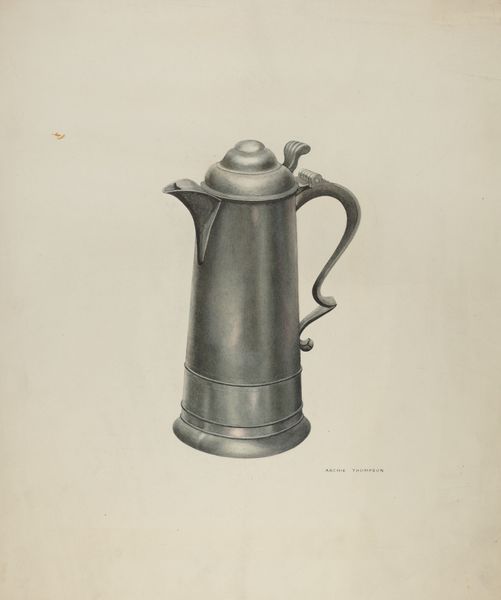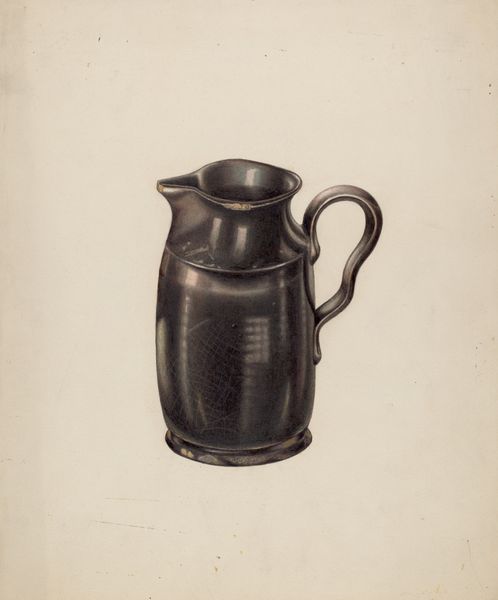
drawing, watercolor
#
drawing
#
watercolor
#
ceramic
#
watercolour illustration
#
watercolor
Dimensions: overall: 30.7 x 23.5 cm (12 1/16 x 9 1/4 in.)
Copyright: National Gallery of Art: CC0 1.0
Curator: Edward L. Loper created this watercolor drawing, aptly named "Tea Kettle," around 1939. Editor: My first thought is, there’s something incredibly comforting about it, like a glimpse into a cozy, domestic scene. The rendering of the copper feels warm and inviting. Curator: Absolutely. It’s interesting to consider the role of domestic objects during this period, the tail end of the Depression era. What does representing this common, everyday item say about value and artistic interest during times of economic hardship? Is this simply a visual exercise, or does it touch upon wider narratives? Editor: I think the focus on the commonplace is precisely the point. These objects carry an enormous weight of social history. The kettle is centered and still: could Loper be drawing a parallel between the preparation and sharing of a warm beverage and communality? Could it perhaps function as an unspoken commentary on resilience during periods of intense economic strain and collective sacrifice? Curator: You make a compelling case for its symbolism. And speaking of resilience, look closely at the material depiction: it's rendered in watercolor and drawing but it seems so sturdy. Consider how the materials mirror the idea of accessible art creation. This suggests that he intended for it to be a symbol of everyday strength. Editor: I also notice that there's no implied social context. There are no people in this drawing—just the object, highlighted in all its quiet significance. The kettle's gentle presence invites us to imagine narratives of gathering, but it doesn't impose them. Curator: Precisely, leaving room for viewers from any period to relate and engage, reflecting changing contexts and contemporary challenges through a simple object of domestic life. Editor: A humble subject, yes, but its timeless appeal underscores art's role in mirroring back societal values across generations. It truly gives one much to ponder, doesn't it? Curator: Indeed, providing an interesting lens for both historical reflection and contemporary relevance.
Comments
No comments
Be the first to comment and join the conversation on the ultimate creative platform.
